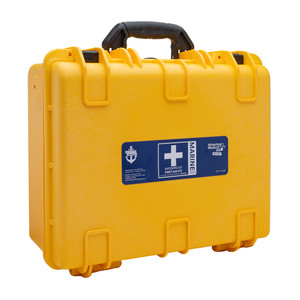
Comprehensive Medical Kits for First Aid on the Water
When you're out on the water, safety is paramount. Whether you're sailing, boating, or engaging in water sports, having a comprehensive medical kit can make all the difference in an emergency situation. In this blog post, we will delve into the essentials of a well-equipped first aid kit for aquatic environments and discuss an additional safety measure: applying non-skid paint for a safer deck surface.
Essential Components of a Comprehensive Medical Kit
A well-stocked medical kit should address a wide range of potential injuries and medical conditions. Here are some essential components to consider:
Basic First Aid Supplies
- Adhesive bandages of various sizes
- Sterile gauze pads and adhesive tape
- Antiseptic wipes and hydrogen peroxide
- Scissors and tweezers
- Disposable gloves
- Instant cold packs
Medications and Treatments
- Pain relievers like ibuprofen or acetaminophen
- Antihistamines for allergic reactions
- Antibiotic ointment
- Hydrocortisone cream for insect bites and rashes
- Motion sickness tablets
Specialized Equipment
- CPR face shield or mask
- Thermal blanket
- Splint materials for fractures
- Waterproof medical tape
- Emergency whistle
The Importance of Non-Skid Paint for Safety
While having a comprehensive medical kit is essential, preventing accidents before they happen is equally important. One effective way to enhance safety on the water is by applying non-skid paint to your deck surface.
Benefits of Non-Skid Paint
This specialized paint provides a textured coating that reduces slip hazards on wet decks, ramps, and other areas where traction is crucial. Here are some key benefits:
- Improved traction, reducing the risk of slips and falls
- Enhanced safety during wet and slippery conditions
- Durable and long-lasting protection
- Easy to apply and maintain
How to Apply Non-Skid Paint
Applying non-skid paint is a straightforward process that can significantly improve the safety of your deck. Follow these simple steps:
- Clean and prepare the surface by removing any dirt, grease, or old paint.
- Sand the area lightly to ensure better adhesion of the paint.
- Apply a primer if required by the paint manufacturer.
- Stir the non-skid paint thoroughly before application.
- Use a roller or brush to apply an even coat of non-skid paint.
- Allow the paint to dry completely before using the deck.
The Takeaway
Safety on the water should never be compromised. By equipping yourself with a comprehensive medical kit and enhancing your deck with non-skid paint, you can be better prepared for emergencies and reduce the risk of accidents. Stay safe and enjoy your time on the water!













